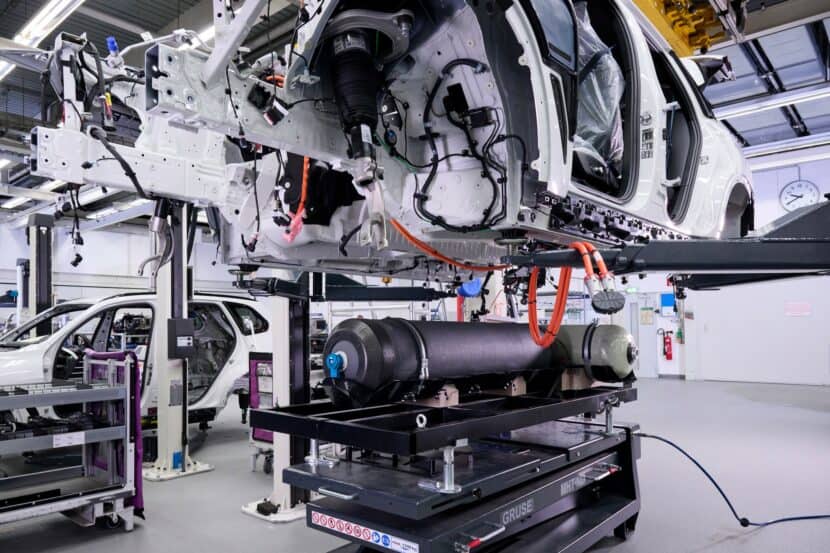At this year’s Art Basel in Basel, BMW highlights hydrogen as a sustainable energy source and movement theme. Partnering with Art Basel for two decades, BMW has commissioned London-based artist Es Devlin to create a series of multimedia artworks, debuting on June 10. In Hall 1.1 of the art fair, Devlin’s booth features four pieces: “Surfacing” (2024), “Surfacing II” (2024), “Mask” (2018), and “Mask in Motion” (2018).
As an introductory chapter, Devlin and BMW present mobile sound installations within a pilot fleet of BMW iX5 Hydrogen vehicles, adorned with prints of Devlin’s collaged paintings. “The innovative works created by Es Devlin for Art Basel demonstrate how technology can inspire art,” says Michael Rath, Head of Hydrogen Vehicles at BMW Group. “We are proud of the pioneering hydrogen technology of BMW Group.”
In Hall 1.1, Devlin’s booth displays “Surfacing” (2024), an illuminated rain cube pierced by light, and “Surfacing II” (2024), painted televisions with a dancing figure displacing pixels and pigment. These are accompanied by “Mask” (2018), a projection-mapped model city blending hands and river, and “Mask in Motion” (2018), a rotating illuminated translucent city entangling viewers within its kinetic shadow.
The exterior of the BMW iX5 Hydrogen features a blue and white collage, overlaying paintings and text inspired by Devlin’s teenage wall prints and literature. Gestures echoing Hokusai’s “The Great Wave off Kanagawa” are superimposed over handwritten extracts from James Joyce’s “Ulysses.” Underneath are excerpts from BMW Group publications on hydrogen fuel cell technology.
The Future of Hydrogen
So what’s next for the BMW hydrogen efforts? The global testing of the BMW iX5 Hydrogen continues with a 100-vehicle pilot fleet which the automaker created to test performance in real-world conditions. We already know that BMW is constantly working to improve the technology. For example, they are focusing on reducing the diameter of the tanks to fit multiple tank vessels into the same space as the battery. This approach will allow BMW be highly flexible in production, enabling them to produce either a battery-electric car or a fuel-cell electric car using the same base design. So it’s not far fetched to think that the Neue Klasse architecture will play a role in the history of BMW hydrogen cars.
The Technology
The BMW iX5 Hydrogen is equipped with two carbon-fiber hydrogen tanks that can store up to 6 kilograms of compressed hydrogen, capable of withstanding a pressure of 700 bar. These tanks are arranged in a T-shape, located in the floor of the vehicle. Although the fuel cells themselves are manufactured by Toyota, the fuel cell stack and software layer are designed and developed in Munich. The iX5 Hydrogen delivers 401 hp (295kW) with 170 hp (125 kW) provided by the electrical power fuel cell, while the rest by the electric motor. The 0-62 mph acceleration time is around 6 seconds. The top speed is rated at 185 km/h, which is equivalent to approximately 115 mph. It can deliver a range up to 500 kilometers on the WLTP cycle and it can be refilled in 3 to 4 minutes.
To showcase the tech, BMW will run a fleet of cars at the 2024 Art Basel so attendees can take a ride in the new iX5 Hydrogen. Here are a couple reviews of the BMW iX5 Hydrogen: here and here.














































































